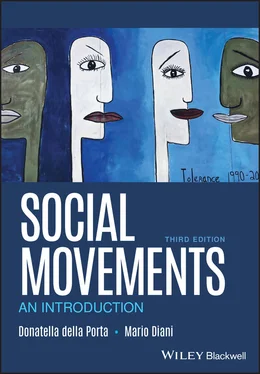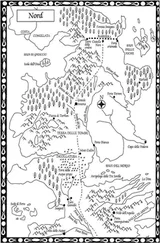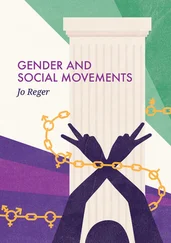Processes of a political nature, rather than based on market dynamics, affect the existence of certain social groups. After the Second World War, the phenomenon has become more marked, with the development of the welfare state, as well as of neocorporatist patterns of interest representation (see Chapter 8). In recent decades, social movements have criticized the model of the interventionist state, as well as that of the state as mediator between the forces of production. Various factors have converged toward a further widening of the potential for conflict. First, as the active role of the state in the distribution of resources has become increasingly evident, the opportunities for mobilization to protect ever more heterogeneous social groups and interests have also grown. Second, while the expansion of social rights has certainly brought greater opportunities for those from the lowest social classes, it has also entailed considerable fiscal redistribution. This has been considered, in the medium term, as particularly heavy for the middle classes, as well as insufficient to cover the growing costs of the welfare state, particularly in the context of an aging population. The result has been a universal welfare crisis that is at the same time fiscal and political. The explicitly political nature of the criteria for the allocation of social resources has, in fact, stimulated mobilization among the middle classes, not only in the form of antitax movements, but also from a perspective that is globally critical of the welfare state (Brissette 1988; Lo 1982, 1990).
More recently, however, the global justice movement has mobilized mainly in defense of the welfare state. In differing ways in various countries, trade‐union organizations have joined in protest, accusing neoliberal globalization of subordinating citizens’ rights to the free market, thus increasing the inequalities both between the North and South and within their own countries. The forerunners of the Seattle protests can be found, at least in part, in the world of work. As mentioned, in various ways, depending on the prevailing patterns of interest representation in various countries, the 1990s saw a transformation of labor action. While, in general terms, the union federations in European countries accepted privatization, deregulation, and the “flexibilization” of labor, opposition grew in other sectors both inside and outside unions.
Apart from public transport, opposition to neoliberal economic policies extended particularly to education and health. In these areas, in countries with pluralist patterns of industrial relations (with various representative organizations competing with each other), new unions highly critical of the various forms of privatization arose and expanded (Sommier 2003; della Porta 2006). In the so‐called neocorporative countries, with occupational representation confined to a single union, public‐sector unionists took the most radical positions (for instance, first workers’ union OETV and then Ver.di in Germany). It was no coincidence that these unions were the most involved in the protest campaigns against neoliberal globalization (della Porta 2006, 2005a).
As for anti‐austerity protests, changing political conditions are related to some specific forms of capitalism. If capitalism is, according to Marxism, one of a set of modes of production, defined on the basis of the relations between the owners of the conditions of production and the producers, then the specific forms exploitation takes during the evolution of capitalism must be expected to have an effect on producers’ mobilization (Barker 2013).
In cities, social movements have developed around claims on “collective consumption” (housing shortages, inadequate health care and education, access to water supply, sewerage systems, and electricity), but also urban planning (relocation of uses and demolition of cityscape). Critical mass, reclaim the streets, or right to the city have been important actors in city politics, addressing economic reorganization and urban redevelopment in the post‐industrial global city (Salet 2007; Pruijt 2007, p. 5116; see also Chapter 3) and its hegemonic model of urban development with large‐scale physical renovation projects. Going beyond the Western world, “the emergence of this model of urban development has been an international process. The privatization and commodification of urban resources, the processes of residential gentrification, the dispossession and displacement of low‐income people, and the growing impact of tourism in central urban areas are increasingly prominent in cities across the world” (Andretta, Piazza and Subirats 2015, p. 203). In recent years, the global crisis “is intensifying the breaking points around which urban social movements have been rallying, suddenly validating their claims and arguments about the lack of sustainability and the destructiveness of the neoliberal growth model” (Mayer 2009, pp. 370–371).
To summarize: the growth of the role of the state has multiplied the number of social actors whose existence and opportunities seem to be linked at least partially to political decision‐making mechanisms. At the same time, the processes of globalization that we have just described, have undermined the capacity of consolidated political actors to effectively mediate between the various interests. Changes in the criteria for defining actors and for determining the stakes to play for, have promoted the multiplication of collective identities and of mobilized interests and, therefore, also their segmentation.
2.3 KNOWLEDGE, CULTURE, AND CONFLICTS
Social movements also react to changes in the value system and the culture in general. We shall discuss in a later chapter the discursive opportunities for movements (see Chapter 8), and their effects on values, knowledge, and attitudes. In this section, we want to single out some general cultural changes that have often been mentioned in relation to movements, looking in particular at the conception of the public and the private, the growth of movement counterculture, as well as the development of global culture.
2.3.1 Shifting Boundaries between the Public and the Private
In the past, the expansion of the role of the state has contributed to the modification of the boundaries between the public and the private. The state has intervened with growing frequency in areas relating to private life, in particular, through the provision of social services and the action of welfare agencies. The principal form of support offered to citizens has been, however, accompanied by increased control over aspects of life that previously would have been left to the autonomous regulation of social actors. The extension of the public health service, for example, has favored the standardization of therapeutic methods and the treatment of crucial events in the experience of individuals, such as maternity. A tendency toward the bureaucratization and rationalization of the private sphere has followed (Habermas 1976, 1987; Melucci 1989, 1996).
In this way, definitions of criteria for determining normality and deviance in areas that were previously left to the regulation of other institutions (such as the church or the family) have become the object of public intervention. Thus, the premises have been created for the rise of new conflicts whose protagonists are social groups – for example, professionals and users of social services, or managers with responsibility for the coordination and running of public agencies (Hoffman 1989). In many cases, protest has related not only to the efficiency of services but also to their impersonality and their tendency to create and reproduce deviance and marginality instead of combating them. Similar concerns are expressed by movements that criticize private groups of professionals (for example, certain sectors of the medical establishment, pharmaceutical companies, and so on) accused of subordinating care for service users to organizational and economic logics (J. Gamson 1989; Crossley 2006).
Читать дальше












